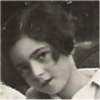 | Name: Erika Harding
Overview: Erika Harding`s father was Jewish and, in 1939, after the Nazis invaded Austria, she came by boat to England. When she looks at her photo of the thin, hollow-eyed little girl on the boat, she`s sure that she already had diabetes. After diagnosis, she was treated at King`s College Hospital, London, by R.D. Lawrence (co-founder of the British Diabetes Association, now Diabetes UK). She left grammar school at 18 and worked as a medical laboratory scientist until she retired. She and her artist husband have both played in many chamber music ensembles.
Hits=4 |
|
| 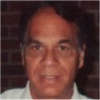 | Name: Tas Bokhari
Overview: Tas Bokhari`s parents were wealthy landowners in India. As Muslims, they were forced to migrate to Pakistan in 1947 and many of his family were killed on the way. He was educated in a mission school and a college before moving to England in 1961. He married an English librarian in 1964 and has two children. After acquiring an HNC in Mechanical Engineering, he worked as a motorcycle inspector and design engineer and then ran a nursing home. He also had a part-time job at Edgbaston cricket ground and was well-known in Pakistan for his radio cricket commentaries.
Hits=3 |
|
| 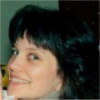 | Name: Julia
Overview: Julia was the first member of her family to go to university, and she taught in a primary school before specialising in teaching dance. Between her diagnosis in 1989 and the recording of this interview in 2004, she spent time in hospital for a variety of reasons, including the births of her three daughters. The biggest changes she noticed during these years were the increasing role of specialist nurses and also a shift to patient control: at first she was automatically put on a drip, whereas later the staff began to trust her to manage her own diabetes.
Hits=3 |
|
|  | Name: Edward Walsh
Overview: Edward Walsh was the son of a village baker. He left school at 15 and trained as an electromechanical engineer. He always had a weight problem but played a lot of sport and felt he had a sensible diet, so was disappointed and upset when he was diagnosed at the age of 50. He controlled his diabetes with diet only, then tablets, then insulin from 2000 but had a remarkable period of 3 months in 2002 when he was able to give up insulin altogether, while working on a contract in French Guyana.
Hits=2 |
|
|
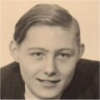 | Name: Patrick Grogan
Overview: Patrick Grogan was treated at King`s College Hospital by R.D. Lawrence (co-founder of the British Diabetes Association, now Diabetes UK) and he remembers Lawrence commenting on the amount of carbohydrate at a hospital Christmas party. He has always kept to a healthy diet, has had lots of exercise as a machine-tool fitter and maintenance worker, and has had no diabetic complications. He`s a member of NHS Concern and the West Midlands Pensioners Convention and says that taking an interest in improving society is what keeps him going.
Hits=2 |
|
|  | Name: Lisa McGregor
Overview: Lisa McGregor was diagnosed shortly before starting secondary school. She spent two weeks in hospital, where she learnt to inject herself from the outset. She was given a `traffic light` book, listing forbidden and permitted foods, but didn`t follow the diet strictly. She injected herself twice daily for 20 years until moving to a more flexible regime, with four injections, in 2003. She describes it as a DAFNE regime (Dose Adjustment for Normal Eating), but hasn`t attended a DAFNE training course. She has had few health problems, but several frightening experiences as a result of hypos.
Hits=2 |
|
|
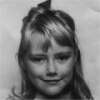 | Name: Clare
Overview: Clare was brought up in a remote Cornish hamlet. Although she developed Type 1 diabetes around the age of 5, she was not given insulin until about 4 years later and was instead kept on a near-starvation diet. She rebelled for many years and only began to take care of herself after she was registered blind in 1984. She went on to gain a second BA, MA and PhD and is now a university research fellow. She has been helped by coming to regard her lack of sight as `an issue around social equality as opposed to a medical issue`.
Hits=2 |
|
| 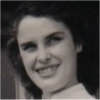 | Name: Grace
Overview: When Grace was diagnosed at the age of 15 her father was working for the Forestry Commission and they lived in a remote Suffolk wood. She was ill for months before diagnosis and thinks this was partly because they lived 4 miles from a GP and 20 miles from a hospital, and because her mother couldn`t face having another sick child after Grace`s sister died from leukaemia. Grace had early cataracts and was registered blind in her teens, but successful treatment throughout the rest of her life has meant that she has always had vision in at least one eye.
Hits=2 |
|
|
 | Name: John Browning
Overview: John Browning`s father was an army officer and John always assumed that he would make his own career in the forces. He was diagnosed with diabetes at the age of 28, not long after getting married, and was invalided out of the army. He became a Conservative party agent and then a teacher. He still weighs his food and attributes his good health to his strict regime. He thinks one of the main improvements in his care has been to see the same specialist at each visit, instead of a different person every time.
Hits=2 |
|
|  | Name: Zin Cherry
Overview: Zin`s daughter, Emma, was diagnosed with diabetes at the age of 10, in 1988. While Emma says that after the shock of diagnosis her parents were `really laid back,` Zin remembers a time of high anxiety. However, she managed to hide her worries from Emma and was supported for several years by a very reassuring Diabetes Specialist Nurse called Sally Strang. Emma is well and happy - and her mother`s only regret is that she sometimes spoilt her and didn`t pay enough attention to her sister`s feelings. Nowadays, Zin thinks that diabetes `doesn`t seem such a big deal at all`.
There is also an interview with Zin`s daughter, Emma .
Hits=1 |
|
|
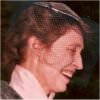 | Name: Beryl Smith
Overview: Beryl Smith first met children with diabetes when she was a student nurse and junior staff nurse at Birmingham Children`s Hospital from 1953 to 1957. She gave up nursing after she got married and didn`t encounter diabetes again until her own daughter, Catherine, was diagnosed in 1964, at the age of five. Catherine had so-called ‘brittle` diabetes, with frequent hypos – until she received two islet transplants in 2006/7. Beryl`s husband, David, developed Type 2 diabetes in 1983. At first he was on tablets, but was able to manage on diet alone after he lost four and a half stone.
Hits=2 |
|
|  | Name: Joanne Pinfield
Overview: Joanne Pinfield was only 5 when she had the frightening experience of waking from a coma in hospital and she has found diabetes frightening for much of her life. At school she felt isolated by being the only person with diabetes. She left at 16 to work in a pottery with a sympathetic boss who helped her not to feel ashamed of diabetes, but then reverted to hiding her condition during 12 years working in a factory. Her father`s death in 2001 prompted her to take better care of herself. She married in 2002 and runs a limousine business with her husband.
There are also interviews with Joanne`s mother, Mary Potter, and husband, Nick Pinfield.
Hits=1 |
|
|
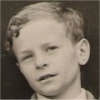 | Name: Philip
Overview: Philip was diagnosed aged 9 and considers that it`s better to get diabetes young, when the body is more adaptable. He attended a grammar school, and regrets that he often used diabetes as an excuse to miss school. He left at 16, but acquired more qualifications later and became a successful accountant. His diabetes was well controlled and caused little trouble for most of his life, until he began to get early morning hypos a few years ago. (He finds the term `hypo` unhelpful, since it`s used to refer to anything from a mild sensation to complete unconsciousness.)
Hits=1 |
|
| 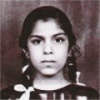 | Name: Bena
Overview: Bena was born in the Kigezi District of Uganda, the daughter of a wealthy businessman. She was diagnosed when nearly 12 and then shunned by children who thought diabetes was contagious. She lived on chapattis and spinach and a bitter vegetable juice thought to cure diabetes. When Idi Amin expelled Ugandan Asians in 1972, her family came to England, and she was delighted to be allowed to eat a wider range of food. She eventually married an Englishman and had two daughters. She works as an office administrator, in a social services department that supports disabled children.
There are also interviews with Bena`s daughter, Emma and her husband, Terry.
Hits=1 |
|
|
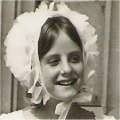 | Name: Harriet
Overview: Harriet was diagnosed when she was 12, and loved Great Ormond Street Hospital, where she was treated until she was 17. Her grammar school couldn`t cope with her diabetes, so she left at 15 to do O and A Levels elsewhere, and eventually gained a Diploma in Fine and Decorative Arts. She has worked for the Tate Gallery and for a company that bought art for corporations, and has also run her own business, and worked in college and university administration. Her daughter was diagnosed with diabetes at the age of 9.
There is also an interview with Harriet`s husband, Greg.
Hits=1 |
|
| 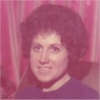 | Name: Shirley
Overview: Shirley left school at 16 and worked for the Inland Revenue until retirement. When she was diagnosed, her mother was very ashamed. Shirley looked after her parents until they died and then lived alone. She has had to cope alone with severe hypos, but says that living alone makes it easier to keep to a strict diet. She feels that her diet has made her healthier than she would have been if she hadn`t had diabetes. She has a low opinion of doctors, apart from a few consultants, but likes the group meetings held nowadays by specialist nurses.
Hits=1 |
|
|
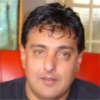 | Name: Mr. Baghria
Overview: Mr. Baghria`s parents are Sikhs who came from India in the 1950s; his father worked as a galvaniser in a factory. His parents` aim was that he should have a good education, but his own dream was to become a truck driver. He married young and he and his wife saved to buy his HGV licence. Not long afterwards, he was diagnosed with diabetes and his licence was revoked. He appealed and managed to get it back, on condition that he had a yearly medical - and he has been driving all over Europe ever since.
Hits=1 |
|
| 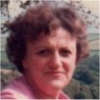 | Name: June Hill
Overview: June Hill had never eaten much sweet food and had always had plenty of exercise so her diagnosis brought little change and had no effect on her career as a teacher and then a nurse. She went on tablets in 1983, and was put on insulin in 1995, when she had a serious illness unconnected with diabetes. She took no interest in her own diabetes for many years until her diabetic mother became housebound. Then she began to inform herself about long-term implications. She is very fit and is enjoying her retirement.
There is also an interview with June Hill`s husband, Tony Hill
Hits=1 |
|
|
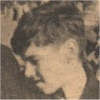 | Name: Fred
Overview: Fred`s family was poor and food was rationed in his early years: he remembers that a Mars bar was cut into slices to last 4 or 5 days! After diagnosis, he was told that `I had to control the diabetes rather than the diabetes control me` and has tried to follow that advice ever since. He lost his sight in 1978 and his second wife left him because she couldn`t cope. He began a successful business making garden furniture and now lives with his third wife, who is also blind.
Hits=1 |
|
| 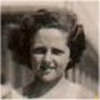 | Name: Ann
Overview: Ann came to England in 1945, and was diagnosed when the matron at her boarding school found her drinking the bath water. Her mother had worked as a nurse at Kings Hospital, London, and took her daughter there, to be treated by R.D. Lawrence (co-founder of the British Diabetes Association, now Diabetes UK). She has memories of being made to go into a hypo, of glass syringes, thick needles, and embarrassing urine tests. She worked as an occupational therapist, and brought up two children alone. Despite eyesight problems, she now makes a living as an artist.
Hits=1 |
|
|
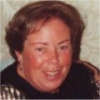 | Name: Christina
Overview: Christina`s parents came to Oxford from Eire in 1948 and she was brought up on an Irish diet of bacon, cabbage and potatoes. Her father worked in a car factory and her mother as a cook and cleaner. Christina went to a Catholic school until she was 15 and then started work folding paper at the University Press, where she met her husband. They married when she was 18 and had two sons. She worked as a cleaner in a private school for 31 years until registered blind in 2001, four years after being diagnosed with diabetes.
Hits=1 |
|
| 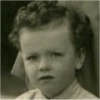 | Name: Simon Lawson
Overview: Simon Lawson`s father was 65 when he was born and his mother 44, and both died while he was in his teens. His unhappiness affected his public school education and he failed to get a place at Cambridge. Instead he worked at Sotheby`s in London and it was only after he married in 1971 that he obtained a degree and a doctorate – leading to his present work as an Oxford University librarian. He has warm memories of being treated by two eminent consultants – RD Lawrence and John Nabarro – and has always enjoyed knowing as much as possible about diabetes.
Hits=1 |
|
|
 | Name: Kushira Hackett
Overview: Kushira Hackett`s mother was white and her father black – from Guyana. Her parents split up when she was 5 and her mother later married a Jamaican. After diagnosis, the hospital staff explained to her mother about portions and gave her scales for weighing food, but gave no explanations to Kushira. Her mother also gave no explanations, and she thinks this led to her rebellion against diabetes, and to her leaving home aged 16. She had a period of homelessness, but later gained a law degree and now lives happily in Birmingham with her partner and two children.
Hits=1 |
|
|  | Name: Greg
Overview: Greg was brought up in Chelsea, attended art college and got a job at the British Museum, where he met Harriet, who`d had diabetes since she was twelve. They married in 1978 and had two children, Dan and Grace. Harriet managed her diabetes well and Greg was not greatly involved, except during her pregnancies. He felt a greater weight of responsibility when Grace was diagnosed - first with diabetes, aged nine in 1999, then with epilepsy, aged ten. He says that he sleeps on a knife-edge: `You listen for every sound that`s happening in the night`.
There is also an interview with Greg`s wife, Harriet.
Hits=1 |
|
|
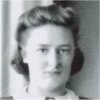 | Name: June
Overview: June`s husband, Charles, was diagnosed with diabetes at Barnstaple Hospital in 1935, when he was ten. After leaving hospital, he didn`t return for a check-up until 1957. He missed two years of school, as it was too far to walk and he had to look after his own injections, urine tests and diet, because his mother had seven other children. After June married Charles in 1946, his diabetes made little impact on their lives. He disliked blood testing and did urine tests until around 2004, when June did blood tests for him. June developed Type 2 diabetes twelve years ago.
Hits=1 |
|
| 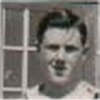 | Name: Ron Craythorne
Overview: Ron Craythorne worked all his life in the family business of carpentry and joinery but, when he retired, there was no-one to take over, so now he and his wife give shows for charity, showing people round the old workshop and selling the products of his woodturning. (He carved and painted the wooden fruit and bowls shown in his photo.) He has played team sports all his life and diabetes has caused him few problems. However, he knows of the problems it can cause, from members of the diabetic group he founded several years ago.
Hits=1 |
|
|
 | Name: Emma Cherry
Overview: By the time Emma Cherry was diagnosed in 1988, GPs were familiar with childhood diabetes; hospital children`s wards were used to dealing with it, and Emma remembers a wonderful diabetes specialist nurse who showed her how to inject herself, and later called at her home twice daily to supervise her early attempts. Her schools, university, and colleagues at work all accepted her without any fuss, and she has never been made to feel `different`. Injections and blood tests are such a routine part of her life that she wonders how she would cope with a cure!
There is also an interview with Emma`s mother, Zin Cherry.
Hits=1 |
|
| 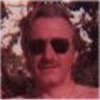 | Name: Colin Gates
Overview: Colin Gates` father and 6 uncles were all butchers and Colin did a meat apprenticeship between leaving school and doing National Service. He worked as a butcher for 17 years then moved into security work; it was during a company health check that his diabetes was discovered. He later became an operating theatre orderly and won an award for his work before a stroke led to early retirement. He regards a subsequent quadruple heart bypass as `the best thing I have ever had done` and refuses to allow other health problems to stop his enjoyment of life.
Hits=1 |
|
|
 | Name: Nick Pinfield
Overview: Nick Pinfield`s wife, Joanne, has had diabetes since she was aged five in 1978. He met her around 1998 at a giftware factory - where he was soldering pewter and she was painting it - and they married in 2002. They now run a limousine business and their decision not to have children is unconnected with diabetes. Unlike Joanne`s mother who saw her have severe hypos, Nick has only known Joanne since she has been managing her diabetes well and it has had little effect on their lives together. However, he does accompany her to all medical appointments.
There are also interviews with Nick Pinfield`s wife, Joanne Pinfield , and with his mother-in-law, Mary Potter.
Hits=1 |
|
| 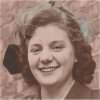 | Name: Madge
Overview: When Madge married Roy in 1951, he`d had diabetes since 1942. He didn`t tell people about it and when she met him he was driving a mobile shop, having previously driven a lorry. He went on to drive a concrete mixer, involved in constructing the M1. He had serious hypos throughout their married life and she woke each night to check he was all right. She rarely had an unbroken night`s sleep until he changed insulin a year ago. He began to lose his sight in 1972, so she did all the driving, and eventually also guided him about.
There is also an interview with Madge`s husband Roy
Hits=1 |
|
|
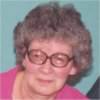 | Name: Betty
Overview: Betty`s first child, Nick, was the son of an American soldier who left England before Nick`s birth in December 1944. In 1961, Nick joined the RAF for 12 years and then returned home, aged 30, to live with his mother and work as a taxi driver. He liked sweet food before he developed diabetes around the age of 40 and found it hard at first to change his diet and give up smoking. He stopped taxi-driving when he was 54 because of failing eyesight and poor health and was on dialysis for about 3 years before he died in 2006.
Hits=1 |
|
| 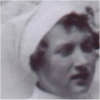 | Name: Monica Winn
Overview: Monica Winn was the only child of a naval officer and grand-daughter of a doctor who diagnosed her diabetes only 4 years after insulin was first manufactured in England. She nearly died of pneumonia; had bronchitis every winter; spent much time in bed and never attended school. Her parents were told she wouldn`t live beyond 14 and she was told that she wouldn`t have children. She had a daughter in 1945 and recorded this interview when she was nearly 86. She is very fit and copes well with slight memory loss after a series of mini-strokes.
Hits=1 |
|
|
| Search returned 46 matches |